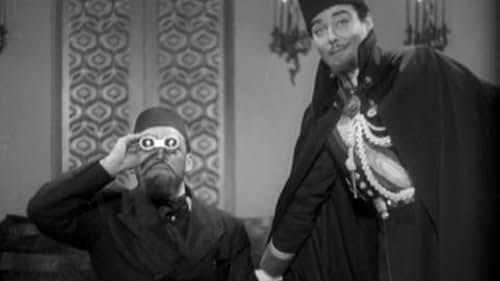Esme Percy(1887-1957)
- Actor
- Producer
Esmé Saville Percy was a distinguished thespian of the English stage,
born in London of French ancestry. He studied acting under
Sarah Bernhardt and at the
Brussels Conservatoire, making his theatrical debut in 1904. As a young
man, he was noted for his good looks. As Percy advanced to star status,
he gained a singular reputation as a leading interpreter of roles in
plays by George Bernard Shaw. This
began as early as March 1928, when he appeared in a radio production of
"Man of Destiny", as Napoleon Bonaparte. In 1913, he set up a touring
company, specialising in Shavian plays. At the end of World War I, he
ran a theatre in Cologne, entertaining British troops as Professor
Henry Higgins in "Pygmalion", co-starring opposite
Mrs. Patrick Campbell.
By the 1920's, Percy's looks had become somewhat dissipated. He was now rather plump, his nose broken in an accident and he had lost an eye after 'a playful mishap' involving a Great Dane. The resulting glass eye proved frequently disconcerting to other cast members, especially during a 1949 performance of "The Lady's Not for Burning", when it popped out and rolled across the floor. He wore an eye patch during subsequent performances.
No longer a star, Percy entered films in 1930 as a character actor. He came to specialise in period drama, often as indeterminate ethnic types. In this vein, he was particularly effective as Count Aristide Karpathy in Pygmalion (1938), a role written for him by Shaw himself. Other eminent historical personae in Percy's repertoire included Samuel Pepys in Nell Gwyn (1934), Lloyd George in Regal Cavalcade (1935) and Napoleon Bonaparte in Invitation to the Waltz (1935). He also appeared in Murder! (1930), an early Alfred Hitchcock. Percy's supporting role in the espionage thriller Spy 77 (1933) was described by the New York Times as "an excellently drawn characterisation" (Feb. 10, 1936).
Percy made several television appearances during the last few years of his life (among them, reprising his comic role of Matthew Skipps in "The Lady's Not for Burning" for the BBC) and acted with the English Stage Company at the Royal Court Theatre. He died in June 1957 at the age of 69.
By the 1920's, Percy's looks had become somewhat dissipated. He was now rather plump, his nose broken in an accident and he had lost an eye after 'a playful mishap' involving a Great Dane. The resulting glass eye proved frequently disconcerting to other cast members, especially during a 1949 performance of "The Lady's Not for Burning", when it popped out and rolled across the floor. He wore an eye patch during subsequent performances.
No longer a star, Percy entered films in 1930 as a character actor. He came to specialise in period drama, often as indeterminate ethnic types. In this vein, he was particularly effective as Count Aristide Karpathy in Pygmalion (1938), a role written for him by Shaw himself. Other eminent historical personae in Percy's repertoire included Samuel Pepys in Nell Gwyn (1934), Lloyd George in Regal Cavalcade (1935) and Napoleon Bonaparte in Invitation to the Waltz (1935). He also appeared in Murder! (1930), an early Alfred Hitchcock. Percy's supporting role in the espionage thriller Spy 77 (1933) was described by the New York Times as "an excellently drawn characterisation" (Feb. 10, 1936).
Percy made several television appearances during the last few years of his life (among them, reprising his comic role of Matthew Skipps in "The Lady's Not for Burning" for the BBC) and acted with the English Stage Company at the Royal Court Theatre. He died in June 1957 at the age of 69.






















